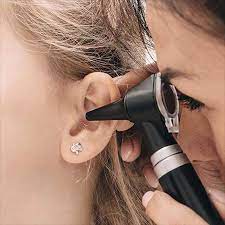Ear wax, or cerumen, is a natural substance produced by glands in the ear canal. While it serves a protective role, helping to trap dust and microorganisms, excessive buildup can lead to discomfort, impaired hearing, and even infection. In-ear cleaning near me in Dubai, ENT (Ear, Nose, and Throat) specialists offer safe and effective methods for ear wax removal, ensuring patients maintain optimal ear health. This article explores the procedures used by ENT doctors in Dubai to safely and efficiently remove ear wax.
Why Ear Wax Removal is Important
Ear wax removal becomes necessary when excessive buildup causes symptoms such as:
- Hearing loss
- Earache or discomfort
- Itching or irritation
- Dizziness or balance issues
- Tinnitus (ringing in the ears)
- Infection
Understanding the Methods for Ear Wax Removal
ENT doctors in Dubai utilize several methods to safely remove ear wax, each suited to different levels of buildup and patient needs. Here’s a closer look at these techniques:
Manual Removal
Manual removal involves using specialized instruments, such as curettes or hooks, to extract ear wax. This method is often used when the wax is near the surface or in cases of impacted cerumen. The procedure is performed with the aid of an otoscope, a device that allows the doctor to visualize the ear canal and determine the best approach for removal.
Process:
- Examination: The ENT specialist examines the ear canal using an otoscope.
- Preparation: If necessary, the doctor may soften the wax with drops or a gentle irrigation.
- Removal: The specialist carefully uses instruments to extract the wax. This is typically done under direct visualization to ensure precision and safety.
Benefits:
- Immediate results
- Precise removal
- Minimal risk when performed by a skilled professional
Irrigation (Ear Syringing)
Ear irrigation is a common method that involves flushing the ear canal with warm water or a saline solution to dislodge and remove ear wax. This technique is particularly useful for softening and removing large amounts of wax.
Process:
- Preparation: The ENT specialist may use ear drops to soften the wax before irrigation.
- Irrigation: A controlled flow of warm water or saline is introduced into the ear canal using a syringe or irrigation device. The water helps to break up and flush out the ear wax.
- Post-Irrigation: The ear canal is checked to ensure that the wax has been effectively removed.
Benefits:
- Effective for soft and loose wax
- Non-invasive
- Relatively quick
Considerations:
- Not suitable for patients with a history of ear infections or a perforated eardrum
- Requires proper technique to avoid discomfort or injury
Suction (Aspirator)
Suction is a modern and gentle method used to remove ear wax by vacuuming it out of the ear canal. This technique is particularly effective for removing smaller, softer pieces of wax.
Process:
- Examination: The ENT specialist uses an otoscope to assess the ear canal.
- Suction: A small, controlled suction device is introduced into the ear canal to gently remove the ear wax. The device creates a gentle vacuum that draws out the wax without causing harm to the ear canal or eardrum.
Benefits:
- Precise and effective
- Suitable for delicate or impacted wax
- Minimal discomfort
Considerations:
- Requires specialized equipment
- Performed by trained professionals to ensure safety
Ear Drops
While not a removal technique per se, ear drops are often used in conjunction with other methods to soften ear wax before manual removal or irrigation. Over-the-counter or prescription ear drops can help to break down hardened wax, making it easier to remove.
Process:
- Application: Ear drops are placed into the ear canal, typically several times a day for a few days.
- Follow-Up: After the wax has softened, the ENT specialist may use manual or irrigation methods to complete the removal process.
Benefits:
- Simple and non-invasive
- Can be used at home before a professional visit
Considerations:
- Requires patience and proper usage
- May not be effective for very hard or impacted wax
Choosing the Right Method
The choice of method for ear wax removal depends on several factors, including:
.The type and consistency of ear wax
.The presence of symptoms or discomfort
.The patient's medical history and any contraindications
Aftercare and Follow-Up
Post-procedure care is crucial for ensuring a healthy recovery. ENT doctors in Dubai typically provide the following aftercare instructions:
Avoiding Water Exposure:
Patients are advised to keep their ears dry for a period following the procedure.
Monitoring Symptoms:
Patients should watch for any signs of infection or unusual symptoms and report them to their doctor.
Follow-Up Visits:
In some cases, a follow-up appointment may be necessary to ensure that the ear canal is clear and healing properly.
Conclusion
Ear wax removal is a common and necessary procedure that helps maintain ear health and prevent complications. In Dubai, ENT specialists use a range of safe and effective methods to remove ear wax, tailored to the needs of each patient. By choosing the right method and following proper aftercare, patients can experience relief from symptoms and ensure their ears remain in optimal condition. If you're experiencing ear discomfort or suspect you have excess ear wax, consulting an ENT specialist can help you find the best solution for your needs.






Comments